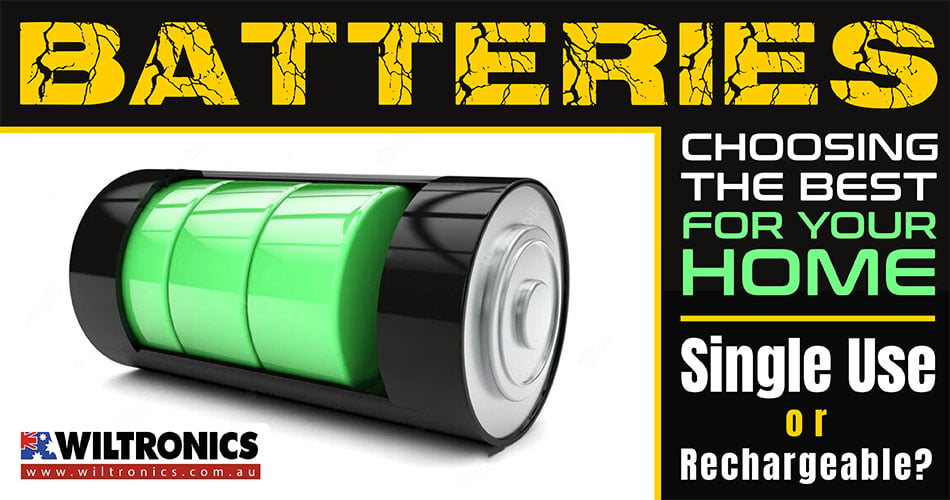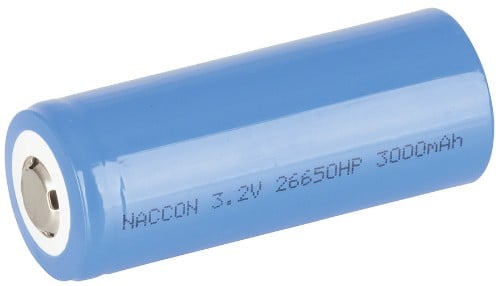Choosing the Best Batteries For Your Home: Single-use or Rechargeable?
March 3, 2023

Choosing the best batteries for your purpose is an essential part of powering your devices.
Despite the immense development of technology, battery-powered equipment remains relevant. Be it in household items or for industrial use. Batteries power our remotes, GPS devices, flashlights, clocks, and children’s toys, to name a few.
Knowing about the different types of batteries can help you in your buying decision. But which one is best for you? Keep reading to find out!
Today’s Best Batteries
Battery technology has advanced rapidly in recent decades. Today, manufacturers have focused on creating more cost-efficient products with longer lifespans. With so many options available, it can be overwhelming to find the best batteries for your needs.
If you are making a purchase, it is important to understand the pros and cons of each type. Selecting the wrong one can be ineffective at best and downright dangerous at worst.
Before you explore the different battery varieties, lets discuss what batteries are.
Batteries Explained
Batteries, also known as cells, are portable storehouses of energy. A cell is an electrochemical unit used to generate or store electric energy. It is comprised of three (3) essential components:
- Anode. The negative or reducing electrode. It releases electrons to the external circuit and oxidises during an electrochemical reaction.
- Cathode. The positive or oxidising electrode that requires electrons from the external circuit. It is reduced during the electrochemical reaction.
- Electrolyte. The medium that provides the ion transport mechanism between the anode and cathode.
Batteries are made up of two chemically different substances that work together. They transfer the electric charge from one to the other. The stored energy can then be used to power electric devices and equipment.
The ideal battery will offer high performance with a long duration at a fair cost. But to get that, you must know what you are looking for.
Different Types Available
There are two main types of batteries, and these are primary and secondary.
Primary batteries, also called ‘disposable batteries’, are usually single-use solutions and are not reversible. They create electricity from chemical reactions between their materials. Simply put, they cannot be recharged after one use and are discarded after.
Secondary batteries, in contrast, can be reused multiple times. This is because they store electrical energy, which can be charged up again after each use. Lead acid & lithium-ion batteries commonly found in cars and phones are great examples.
Choosing the Best Batteries
First, figure out what size of batteries you need. Then, you can decide which suits your needs best: single-use or rechargeable.
Different battery sizes contribute to the overall effectiveness of your equipment. To figure it out is very simple. You do not need to know much to get the right size for your device. It can be as easy as looking at the batteries in your clock; for instance, and replacing them with the same size.
But what if you do not already have batteries installed? Look on the device for some indication or check the instruction manual. Below are the common sizes for batteries and their working principles:
AA
Also known as “double A”, AA batteries are by far the most popular size and are used in various applications. They measure at 1.5V and are ideally used for devices that are always on but use minimal energy, such as a clock.
AAA
Also known as “triple A”, AAA batteries are mostly used for small devices that do not require a lot of energy. They also measure at 1.5V but generate less energy due to their smaller size. These compact batteries can power thermometers and kitchen timers, to name a few.
AAAA
“Quadruple A” or AAAA batteries are not as common as their AA and AAA counterparts. Small but powerful, they are often used in LED penlights and laser pointers. They pack a powerful punch, making them also great for smaller items, e.g. hearing aid remote controls.
C
C batteries are heavy-duty and mainly used for toys, flashlights, and portable radios. A number of other devices will also require the use of these 1.5V batteries.
D
This type of battery works best for devices that need an extended period of power time. Large flashlights, for instance, as well as stereos or paper towel dispensers. D batteries are large and bulky, providing hours of use and power.
9V
Known for its rectangular shape, the 9-Volt battery is of great use for high-voltage devices. It works extremely well for IR thermometers and electronic portion scales. 9V batteries offer outstanding performance, working in environments from 0 to 130°F.
CR123A
Packed with power, CR123A is shorter in length than an AA battery. It generates 3V, delivering a huge amount of power while maintaining a small size. It is often used for tactical equipment, wireless security, and home automation. This battery will also last longer than most, thanks to its large power-to-size ratio.
23A
Delivering 12V of power, 23A batteries are small in size. They are used in applications that require infrequent but powerful bursts of energy. These include garage door openers, wireless doorbell, keyless entry devices, and more.
CR2032
Although compact, CR2032 batteries offer a lot of power. These batteries provide long-lasting, reliable power and have a very high weight-to-power ratio. At 3V, they make ideal use for watches, calculators, toys, and medical devices.
Single-use or Rechargeable?
If you are shopping for batteries like AAA, AA, C or D, you can choose between a single-use or rechargeable variant. Both have advantages and disadvantages, and here is a quick look at those:

Single-use batteries
Single-use batteries have a high initial energy capacity. But when they run out of juice, you need to dispose of them. The two main types of single-use batteries are alkaline and lithium.
Pros:
- Cheaper upfront cost than rechargeable batteries.
- Very low self-discharge rate (a.k.a. power loss when not in use) for long shelf life.
- Widely available.
Cons:
- Requires disposal after fully discharged.
Single-use alkaline is best to use for low-drain devices. These include LED flashlights, remote control devices, and clocks and radios, to name a few.
Alkalines can also be used for high-drain devices, such as digital cameras. But such equipment can exert a large draw of energy, reducing the lifespan of the battery significantly.
Nominal voltage: 1.5 (this gradually declines to less than 1 volt as it discharges its energy)
Estimated shelf life: 5 to 7 years (at 20°C/68°F)
As for single-use lithium, they have the highest energy density of any battery cell. Thus, they can store more energy than alkaline or any single-use battery of the same size. Also, they are superb performers in extreme hot and cold temperatures.
It is advisable to use single-use lithium batteries with caution. Their higher voltage capacity makes them too powerful for some devices. This could damage circuity; to avoid this, read manufacturer instructions before using.
Unlike alkaline, the lithium type is best to use for high-drain devices. Plus, in most – but not all, moderate-drain devices, like headlamps.
Nominal voltage: 1.5–3 (this gradually declines as the battery discharges)
Estimated shelf life: 10–15 years (at 20°C/68°F)

Rechargeable batteries
Rechargeable batteries can be recharged over and over again, up to 500 times or more. There two main types and these are nickel-metal hydride and lithium-ion. Also available are Ni-Cad aka Ni-Cd batteries which have a Nickel-Cadmium chemistry.
Pros:
- They generate less waste than single-use varieties.
- They offer better long-term value. The more you use them, the cheaper they get.
Cons:
- More expensive upfront cost than single-use.
Rechargeable nickel-metal hydride batteries are best to use for high-drain devices. This includes equipment that experiences prolonged or continuous use, such as GPS receivers. However, they are not recommended for items that are rarely used or inspected, e.g. smoke detectors.
Moreover, they have a nominal voltage of 1.2. This drops to 1.1 before a charging cycle is complete. The estimated number of recharging cycles is 150 to 500.
Self-discharge rate: Loses 1% (or more) of stored power per day, roughly 40% per month.
Storage: Store fully charged at 60°F/15.5°C.
As for rechargeable lithium-ion batteries, they can come in the form of a block or battery pack. They are commonly used in smartphones, computers, and other consumer electronics.
Best used for notebook computers, GPS sport watches, and portable power devices. They have a nominal voltage of 3.6, higher than their nickel-metal hydride counterparts. Plus, an estimated number of 500 to 1,000 recharging cycles, adding up to its number of pros.
But its self-discharge rate is very low. Even if unused, they are negatively impacted by age, robbing them of some energy capacity.
Storage: Store at roughly 60°F/15.5°C, either fully charged or at 50% of capacity — but this varies.
The Bottom Line
The best batteries are indispensable stores of energy! Ultimately, they have become an essential part of modern life, both at home and away. And to get the most out of your batteries, you need to find the right type for your devices.
This article was originally published in November 2020 and has been updated.
© Electrotech Brands Pty Ltd 2023


Write a Comment
You must be logged in to post a comment.